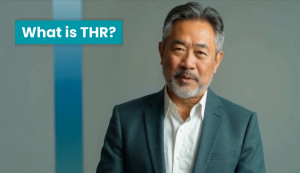WHO Responses to Tobacco Harm Reduction, Polio, and Smallpox

impressed young blonde ill slavic woman wearing medical mask and scarf holds money and packs of medical pills isolated on purple background with copy space
An Analytical Review of Vaccine Histories, Scientific Principles, and Policy Approaches
The World Health Organization (WHO) has played a pivotal role in shaping global health policy, particularly in its responses to infectious diseases and public health crises. Its actions have historically been guided by scientific evidence, international collaboration, and a commitment to improving health outcomes worldwide. However, the WHO’s approaches to various health challenges have not always been uniform. This article provides a balanced comparison of the WHO’s responses to tobacco harm reduction (THR), polio, and smallpox. By examining the discovery and adoption of polio and smallpox vaccines, the scientific principles underlying these efforts, and the policies that emerged, we can better understand the organization’s evolving stance—especially in light of its current position on THR. This analysis aims to inform public health professionals, policy analysts, and general readers about the complexities and consequences of these policy decisions.
Brief History of Smallpox and Polio Vaccines
Discovery and Development of the Smallpox Vaccine
Smallpox, caused by the variola virus, was one of the deadliest diseases in human history. The story of its vaccine begins in 1796 with Edward Jenner, an English physician who observed that milkmaids who had contracted cowpox, a less severe disease, were immune to smallpox. Jenner inoculated a young boy with material from a cowpox sore, demonstrating immunity to smallpox and laying the foundation for modern vaccinology. Over the following centuries, the smallpox vaccine was refined, mass-produced, and distributed globally, becoming the cornerstone of the fight against the disease.
Discovery and Development of the Polio Vaccine
Polio, a highly infectious viral disease, was a major cause of paralysis and death, especially among children. Efforts to develop a vaccine intensified in the early 20th century, culminating in two landmark breakthroughs. In 1955, Jonas Salk introduced the first inactivated polio vaccine (IPV), which used killed virus particles. A few years later, Albert Sabin developed the oral polio vaccine (OPV), using a weakened live virus. Both vaccines proved effective in preventing polio and were rapidly adopted worldwide, leading to a dramatic reduction in cases.
Adoption and Global Impact
The adoption of the smallpox and polio vaccines was driven by clear scientific evidence of their efficacy and safety. International campaigns, led by organizations like the WHO, facilitated widespread immunization, turning these vaccines into public health success stories. The global eradication of smallpox in 1980 and the near-eradication of polio stand as testaments to the power of vaccines and coordinated policy action.
WHO’s Response to Smallpox
The WHO’s smallpox eradication campaign is widely regarded as one of the most successful public health initiatives in history. Launched in 1967, the campaign was grounded in robust scientific evidence and a pragmatic, evidence-based strategy. The WHO coordinated mass vaccination efforts, surveillance, and containment strategies, adapting policies based on real-world data. The guiding principle was the risk-benefit analysis: smallpox posed a grave threat, and the vaccine’s benefits far outweighed its risks. International collaboration and local engagement were critical, with the WHO acting as a central authority to harmonize efforts. The campaign culminated in the official declaration of smallpox eradication in 1980, marking a milestone in global health.
WHO’s Response to Polio
Following the success of the smallpox campaign, the WHO turned its attention to polio. The Global Polio Eradication Initiative (GPEI), launched in 1988, exemplified the organization’s commitment to evidence-based policy and international cooperation. The WHO coordinated mass immunization campaigns using both Salk’s IPV and Sabin’s OPV, tailored to local epidemiological conditions. The scientific rationale was clear: interrupting virus transmission through high vaccination coverage would eventually eliminate the disease. The WHO’s role included setting global standards, monitoring progress, and responding to outbreaks. While challenges such as vaccine-derived poliovirus and logistical barriers persist, the incidence of polio has been reduced by over 99%, illustrating the effectiveness of sustained, science-driven policy.
Scientific Principles Guiding Vaccine Acceptance and Policy
The acceptance and promotion of smallpox and polio vaccines were underpinned by fundamental scientific principles:
- Evidence-Based Policy: Decisions were based on rigorous clinical trials, epidemiological data, and ongoing research.
- Risk-Benefit Analysis: Policymakers weighed the significant risks posed by the diseases against the relatively minor risks of vaccination.
- Adaptability: Policies evolved in response to new evidence, ensuring that interventions remained effective and safe.
- Transparency and Collaboration: International cooperation and open communication with the public were essential for building trust and ensuring widespread adoption.
These principles ensured that public health interventions were justified, accepted, and effective.
WHO’s Approach to Tobacco Harm Reduction (THR)
Tobacco harm reduction refers to strategies aimed at minimizing the health risks associated with tobacco use, particularly for individuals who are unable or unwilling to quit nicotine entirely. Alternative nicotine products, such as e-cigarettes, heated tobacco products, and snus, have emerged as potential tools for reducing harm compared to combustible cigarettes. However, the WHO’s current approach to THR starkly contrasts with its evidence-based policies on vaccines.
The WHO has maintained a generally prohibitionist and moralistic stance toward THR. It has been criticized for rejecting or downplaying scientific research that highlights the relative safety and harm reduction potential of alternative nicotine products. Instead, the organization often emphasizes abstinence-based approaches and strict regulation, arguing that any form of nicotine use perpetuates addiction and undermines tobacco control efforts. This position has led to the marginalization of research that does not align with the WHO’s overarching agenda, potentially hindering the adoption of less harmful alternatives for smokers.
Comparative Analysis: Evidence-Based Approaches vs. THR Policy
A comparison of the WHO’s historical responses to smallpox and polio with its current stance on THR reveals notable differences:
- Alignment with Scientific Evidence: In the cases of smallpox and polio, the WHO embraced scientific advancements and adapted policies based on emerging evidence. In contrast, its approach to THR appears less receptive to new research, particularly studies that challenge its established narrative.
- Risk-Benefit Analysis: Vaccine policies were guided by clear assessments of relative risk. With THR, the WHO has been criticized for focusing on potential risks while overlooking substantial evidence of reduced harm compared to smoking.
- Policy Flexibility: The WHO’s vaccine campaigns demonstrated adaptability and responsiveness to changing data. Its THR policies, however, have been described as rigid and ideologically driven, with little room for debate or revision.
- Public Health Impact: The adoption of vaccines led to dramatic reductions in disease burden. By contrast, the WHO’s restrictive approach to THR may limit the potential health benefits for populations struggling with tobacco-related disease.
Influence of Moralistic and Prohibitionist Perspectives
The divergence in WHO’s policy approaches can be partly attributed to differing underlying philosophies. The organization’s vaccine campaigns were grounded in pragmatism, scientific rigor, and a clear focus on reducing harm. In the case of THR, however, critics argue that moralistic and prohibitionist perspectives have taken precedence. Concerns about normalizing nicotine use, protecting youth, and maintaining public health messaging have led the WHO to adopt a more restrictive stance—even in the face of emerging evidence supporting harm reduction strategies. This shift raises important questions about the role of values, ideology, and evidence in global health policymaking.
Conclusion: Lessons from Vaccine History for Future Harm Reduction Policy
The WHO’s campaigns against smallpox and polio demonstrate the transformative potential of evidence-based, adaptable, and collaborative public health policy. These successes were built on a foundation of scientific rigor, openness to new evidence, and a willingness to balance risks and benefits for the greater good. As new challenges emerge—such as tobacco harm reduction—the organization faces a critical choice. By learning from its own history and re-embracing these scientific principles, the WHO can better serve global health, ensuring that policy decisions remain grounded in evidence rather than ideology. Such an approach is essential for addressing the complex realities of modern public health and maximizing the potential benefits of harm reduction for all.
Also reference tobacco smokers and users of less harmful nicotine products and how their right to health is compromised by the failure of WHO to follow the science and deny harm reduction despite it being a part of i8ts stated mission to end tobacco use
The restrictive and prohibitionist stance of the WHO on tobacco harm reduction (THR) not only undermines scientific progress but also directly impacts the rights and health outcomes of millions of adult smokers and users of less harmful nicotine products. Central to the WHO’s stated mission is the goal of reducing tobacco use and protecting public health. Yet, by disregarding robust scientific evidence supporting alternative nicotine products such as e-cigarettes, heated tobacco products, and nicotine pouches the WHO is effectively denying adult smokers access to potentially life-saving options that could help them transition away from deadly combustible tobacco.
Adult smokers, many of whom struggle to quit using traditional methods, are left with limited options when harm reduction strategies are dismissed or actively discouraged by global health authorities. This not only compromises their right to make informed decisions about their own health but perpetuates the cycle of tobacco-related disease and death. The WHO’s failure to embrace a science-based, harm reduction approach stands in stark contrast to its earlier, pragmatic strategies with vaccines, where the focus was on maximizing public health benefits and minimizing harm.
By failing to capitalize on the potential of less harmful nicotine products, the WHO is missing a critical opportunity to reduce the global burden of disease caused by smoking. This inaction ensures that millions of smokers, particularly in regions with limited access to cessation support, will continue to suffer preventable illness and premature death. The organization’s reluctance to adapt its policies in light of emerging evidence and its adherence to an ideologically driven agenda undermines individual autonomy and the fundamental right to health. In effect, WHO’s current approach not only falls short of its own mission but also perpetuates a public health crisis that could be mitigated by embracing harm reduction as a legitimate and necessary component of tobacco control.
For meaningful progress, it is imperative that the WHO reconsiders its position and aligns its policies with the best available scientific evidence. Only by doing so can it truly serve the interests of adult smokers seeking safer alternatives and fulfill its obligation to protect and promote global health.







